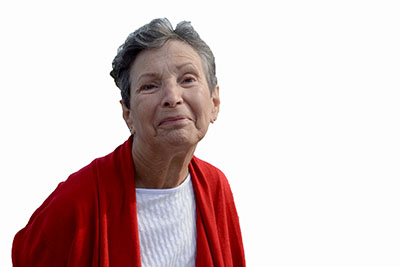
By Joan Koczor
The meaning of the American Dream has seen many changes since first introduced as early as the 1600s.
The American Dream is mentioned in the Declaration of Independence, which states “all men are created equal” with the right to “life, liberty and the pursuit of happiness.”
Freelance writer James Adams popularized the phrase “American Dream” in his 1931 book “Epic of America.” in his 1963 “Letter from a Birmingham Jail,” Martin Luther King Jr. based the civil rights movement in the African American quest for the American Dream.
As young adults, many believed they could achieve the American Dream by working hard, saving a little to provide an education for their kids so they could have a better life than they did, and retire with sufficient funds to see them through their retirement or golden years – hopefully, mortgage- and debt-free.
The new reality is people are living longer, more expensive lives with very little money in reserve.
The result is Americans older than 65 are working – nearly 1 in 5. Over the past decade those numbers have risen faster than any other age group. Today there are 9 million seniors working compared to 4 million in 2000.
Some seniors are returning to the workforce by choice while others are returning out of need. A recent poll showed many older people are more concerned with running out of money than dying.
Theresa Ghilarducci, a labor economist said, “There is no part of the country where the majority of middle-class older workers have adequate retirement savings to maintain their standard of living in their retirement.”
Seniors are traveling the nation looking for seasonal jobs offering hourly wages and few or no benefits.
Amazon’s Camper Force program hires thousands of seniors to box online orders during the Christmas rush. Walmart has hired many elderly employees as greeters and cashiers. Websites such as Workamper News have been created listing various types of jobs.
This is not the case with all seniors. There are some who have adequate funds to enjoy a carefree lifestyle. That makes some of us wonder where we went wrong. How did they accumulate all that money?
A little grim? Reality can be like that.
Ask yourself – how important are money and possessions. You can’t put a dollar amount on sharing each day with the person you love, and having reasonably good health, a place to call home, food on the table and friends to share the good times and bad.
Joan Koczor is a senior advocate and a member of the Age-Friendly Maricopa Advisory Committee.
Changes to Medicare cards coming
Medicare (CMS) is developing a new number which will replace the SSN-based Health Insurance Claim Number on the Medicare cards. CMS will be mailing new Medicare cards between April 2018 and April 2019 to all individuals with Medicare.
The new Medicare card will:
- have a new number unique to the individual.
- no longer contain the social security number of the individual.
- not change the Medicare coverage or benefits for the individual.
To ensure timely receipt of the new Medicare card, ensure your mailing address is up-to-date. If the individual needs, they may do so Visit SocialSecurity.gov or call toll-free 1-800-772-1213 to correct your address. TTY users can call 1-800-325-0778. You can also write or visit any Social Security office.
Reminder: Medicare will never contact the individual to request personal information. The individual needs to protect their new Medicare number like their Social Security number and only share it with trusted providers.
Source: Pinal County Newsletter
This column appears in part in the February issue of InMaricopa.

![Senior Info/Expo draws hundreds Clinical Liason Elaina Young of Compassus Hospice and Palliative Care speaks with an attendee at the Senior Info/Expo at the Maricopa Library and Cultural Center on Jan. 20, 2024. [Monica D. Spencer]](https://www.inmaricopa.com/wp-content/uploads/2024/01/spencer-012024-senior-info-expo-web-01-218x150.jpg)




![He has the power: Weightlifter doesn’t let age or others’ opinions stand in his way Mack Hodges. [Bryan Mordt]](https://www.inmaricopa.com/wp-content/uploads/2023/08/BCM_8517-scaled-e1690992804625-218x150.jpg)





![Alleged car thief released without charges Phoenix police stop a stolen vehicle on April 20, 2024. [Facebook]](https://www.inmaricopa.com/wp-content/uploads/2024/04/IMG_5040-218x150.jpg)

![MHS G.O.A.T. a ‘rookie sleeper’ in NFL draft Arizona Wildcats wide receiver Jacob Cowing speaks to the press after a practice Aug. 11, 2023. [Bryan Mordt]](https://www.inmaricopa.com/wp-content/uploads/2024/04/cowing-overlay-3-100x70.png)


